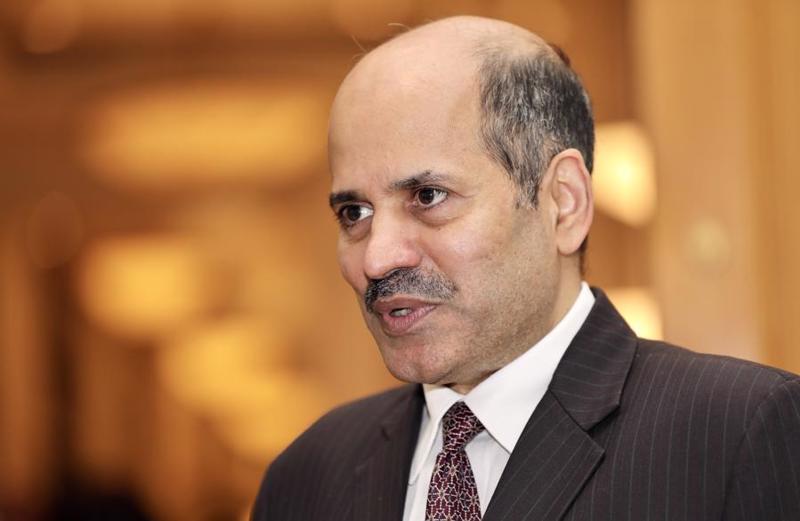Given the recent visit to Vietnam by a business delegation from the Indian Electrical and Electronics Manufacturers Association (IEEMA), what is your assessment of Vietnam’s potential in manufacturing electrical and electronics equipment?
I have observed over recent years that Vietnam possesses a robust industrial base and a thriving economy, coupled with a rapidly-expanding market. Regarding investment opportunities, the Vietnamese Government has effectively concentrated on establishing a favorable environment for foreign investors to enter and invest in the country. Numerous Indian investors have been present here for quite a few years, and they are all very happy. Therefore, my congratulations and commendations go to Vietnam for achieving great success in attracting investment and fostering the industrialization of the country through investment routes and exports in a very substantive, rapid, and impressive manner.
What factors are of interest to Indian businesses operating in the electrical and electronics sector when considering the investment environment in the Vietnamese market?
Over the years, India has developed a robust industrial sector, showcasing strengths in various domains where we possess significant national capabilities. Similarly, Vietnam has also seen very strong achievements in the field of electrical and electronic goods. So, I would like to see business-to-business cooperation in terms of three or four components.
One obvious area is investment opportunities for Indian manufacturers of electrical goods of various kinds. There is a large presence today of power manufacturers in electrical power, including power generation from coal power plants, gas power plants, and solar, renewable, and wind plants, etc.
The second component is power transmission, including activities such as laying transmission lines. Consequently, there is a robust presence of companies engaged in power production and project execution.
The third component is power distribution. Many small components come into play, starting from transformers to motors to various equipment, cables, and more. So, in all three areas, we have lots of substrates, and many companies have a significant presence in India. They are also looking for investment opportunities.
But I believe that, apart from investment, there are lots of opportunities for trade in many of these electrical and electronic items between the two countries. There are also a lot of opportunities in technological exchange, because I think Vietnam has strengths and we have strengths, and I think it’s good for companies to talk to each other to try to see whether they can either share the knowledge that they have or share various techniques that they have developed for power plants, power distribution, or power transmission lines. So I think the fourth component is basically business-to-business partnerships. These can be joint ventures trying to work together or trying to cooperate in executing big projects in Vietnam and in India.
As Vietnam is trying to move towards a green economy, how does India plan to support that process?
India has witnessed remarkable progress, particularly in the solar power sector, over the last five to seven years. Installed capacity has soared to around 150,000 MW for solar and wind power plants. The opportunities in Vietnam are vast, especially with its ambitious plans outlined in the National Power Development Plan VIII (PDP8). The focus of upcoming initiatives is expected to be on wind power, solar power, and the establishment of gas-based power plants.
I believe there are significant opportunities once again, particularly in the upcoming large-scale transmission projects in Vietnam. Several robust Indian companies are poised to participate in these projects. They may explore various models, including direct investment, business-to-business partnerships, and potential joint ventures to effectively undertake and execute these projects. These avenues present noteworthy opportunities for collaboration and growth.
Can you tell us about the prospects for trade and investment cooperation between the two countries in the years to come, and especially in 2024?
Bilateral trade volumes between India and Vietnam, according to official data, stand at $15 billion. This is an area where we are putting in significant effort. Direct investment stands at approximately $1 to $2 billion between the two countries. It’s worth noting that some Indian investments go through third countries, so the actual investment may be higher than that reflected in the numbers. Our focus is on fostering more interaction between businesses in both countries. When businesses engage with each other, the discussions go beyond simple trade or investment; they involve sharing, forming partnerships, collaborating on projects, and even exploring opportunities in a third country.
We are actively engaged at the government-to-government level, putting significant effort into various initiatives. In August, a meeting took place between the industry and trade ministries in both countries, resulting in fruitful discussions and progress in some areas, though more work remains in others. Additionally, there was a meeting in October for the joint commission between the two countries on economic, trade, and scientific cooperation, where it was recognized that more efforts are needed. Another crucial aspect is the ongoing review of the ASEAN-India Free Trade Agreement, initiated earlier this year and scheduled for completion in 2025.
These two years are crucial for establishing a new framework at the government-to-government level. This framework will encompass tariff arrangements, technical standards, Rules of Origin, and the facilitation of the movement of goods and trade. Concurrently, there are three ongoing levels of government-to-government processes. Simultaneously, there are plans to facilitate a greater movement of business delegations in both directions at the business-to-business level.
We are planning a major exhibition of Indian products sometime next year. We are also planning to take more Vietnamese companies to visit India and attend exhibitions, fostering more extensive business engagement between the two countries. So, we have plans at both the government-to-government and business-to-business levels, and these efforts complement each other. Positive developments at the government level encourage businesses, and as businesses thrive, the interaction between governments also intensifies. This synergy is our plan for 2024.









 Google translate
Google translate